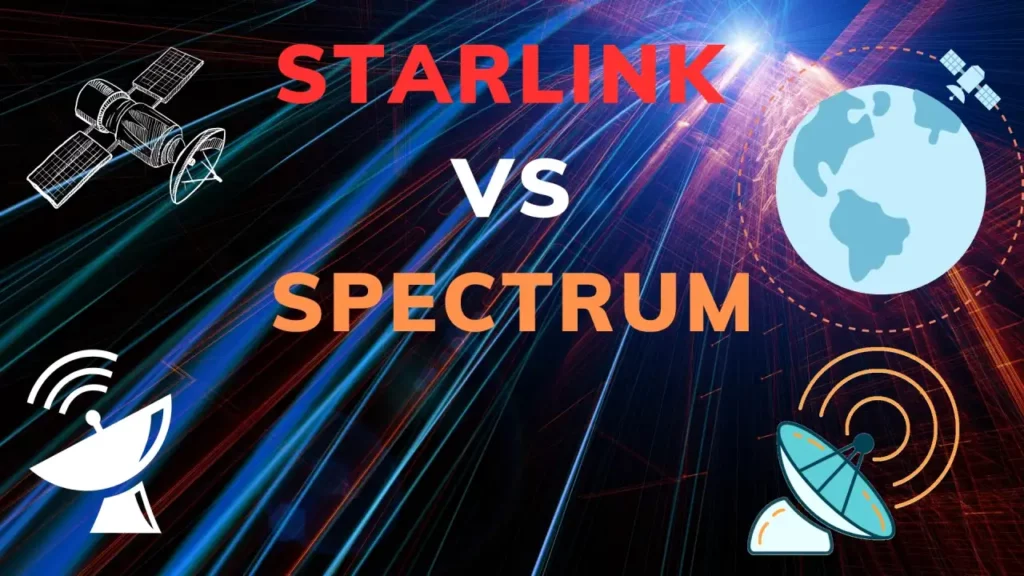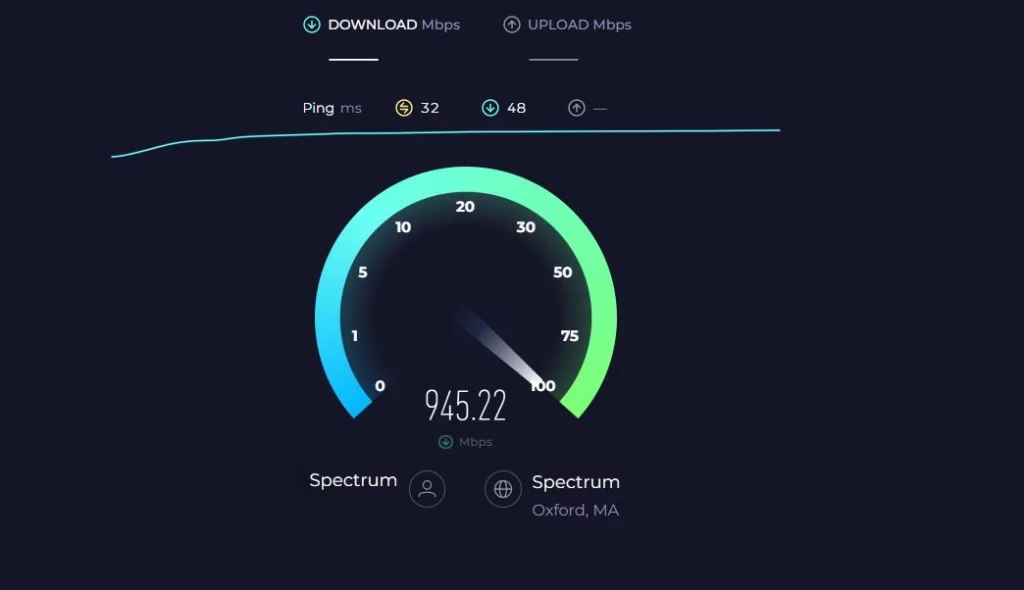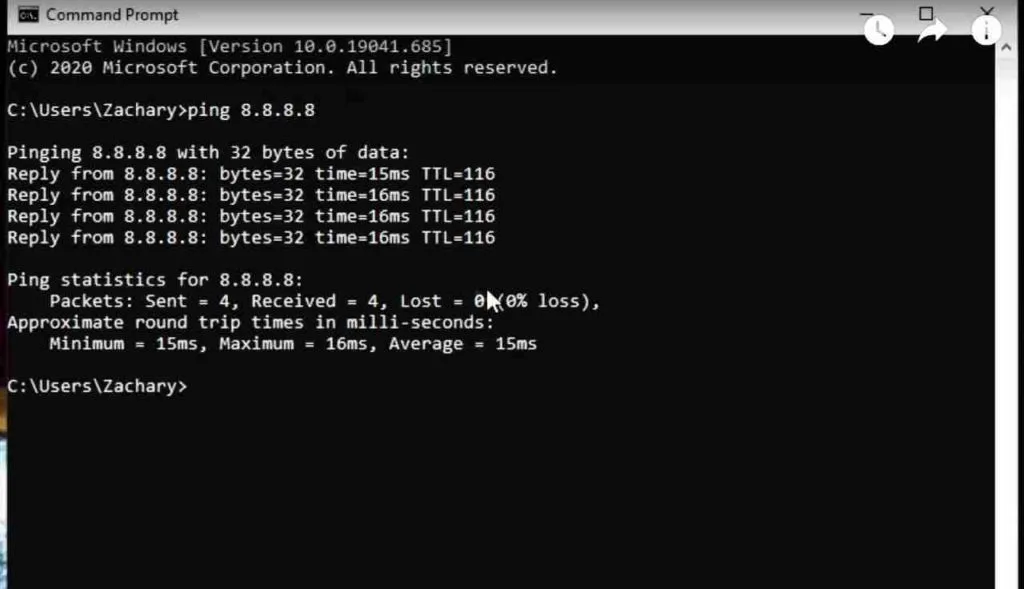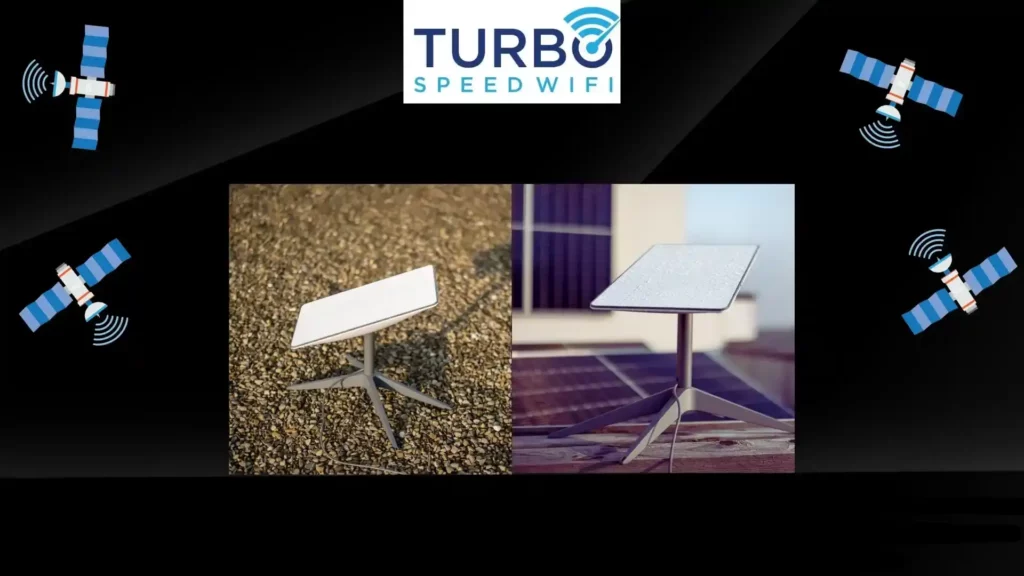Starlink and Spectrum are popular internet service providers (ISPs) that are available to millions of potential subscribers. Internet from space or internet from Earth, which is the better option for most people?
We break it all down and help you choose between Starlink and Spectrum internet service for your home. We also show you what internet service provider plan might best suit your needs.
| Starlink | Spectrum | |
|---|---|---|
| Type of Technology | Low Earth Orbit Satelllite | Cable |
| Release Date | 2020 | 1993 Charter 2014 Spectrum |
| Download Speeds | 35 – 140 Mbps | 300 – 1000 Mbps |
| Upload Speeds | 5 – 10 Mbps | 10 – 35 Mbps |
| Latency (Ping) | 45 ms – 75 ms | 15 ms – 35 ms |
| Ping Stability | Fair/Good | Good/Very Good |
| Ease of Setup | Easy | Easy |
| Upfront Cost | $599 Standard $2,500 High Performance | $0 |
| Monthly Service Cost | $90 – $110 | $50 – $90 |
| Contracts | No | No |
| Free Trial | No | No |
| Data Caps | Yes 1 TB (Soft) | No |
Table of Contents
Primary Differences Between Starlink and Spectrum
- Starlink by nature of satellite technology has significantly more coverage, especially in rural areas
- Spectrum is generally less expensive
- Starlink has a 1 TB soft data cap
- Spectrum currently has no data caps; however, the company is considering adding them
- Spectrum offers faster download speeds
- Spectrum home internet has better reliability than Starlink
- Starlink customer service leaves much to be desired
Starlink vs Spectrum: Service Availability
Spectrum is one of the largest ISPs in North America, with service available to millions. However, many rural areas of the United States lack access to the infrastructure needed to support Spectrum Internet. This is precisely where Starlink shines its brightest.
Starlink, by virtue of being a satellite-based internet service, has much greater coverage. This is especially true in many rural communities. Starlink is able to more easily provide internet access to rural areas around the world.
Enter your service address in the official Starlink Map and see if the service is available at your address. Overall, Starlink is able to offer internet service to a large percentage of the population than Spectrum. However, just because you live in an area covered by Starlink doesn’t necessarily mean it is your best option.
Spectrum also has a helpful availability checker tool that you can use to see if service is available at your residence. In most cases, urban areas are more likely to have the infrastructure needed to properly support Spectrum internet. You may find that one or both of these services are available in your area. Some users will have the option of both services.

Starlink vs Spectrum: Pricing Compared
Starlink is the more expensive option, both upfront and as an ongoing monthly expense. Starlink Residential Internet Service costs between $90 – $110 per month, depending on your service address location. Starlink charges the higher rate for locations that are already at or above capacity.
Starlink also requires, at minimum, the upfront purchase of your Starlink Terminal (Dish), which costs $599. This also includes a very basic wireless router and all necessary cables. An optional high-performance Starlink Terminal is also available to Starlink Residential customers and costs $2,500. Some Starlink customers also have to spend additional money on mounting accessories such as pole mounts.
Spectrum Internet tends to cost about $50 – $90 per month, depending on which plan you choose to subscribe to. The faster plans, on average, cost more. Spectrum also offers promotions where you can often get a lower price for the first 6 – 12 months of service.
Spectrum also includes a modem at no additional monthly cost. Unlike Xfinity and other providers that charge up to $15 per month for a modem rental, Spectrum includes a modem in your monthly cost.
Spectrum is the winner in terms of cost, both upfront and on a monthly basis. If you are looking for the less expensive option, Spectrum is better than Starlink. Learn more about why Starlink Internet costs so much. SpaceX, the company that owns Starlink, is not really able to compete with companies such as Spectrum on price. They are too different in terms of their cost structure.
| Starlink Internet | Spectrum Gigabit | Spectrum 300 Mbps | |
| Cost Per Month | $90 – $110 | $89 | $49 |
| Upfront Cost | $599 – $2,500 | $0 | $0 |
Starlink has a soft data cap of 1 TB. After that, your data is deprioritized below the level of other Starlink users. This may or may not make much of a difference to most users. Spectrum currently does not have any data caps in place. However, there are talks about possible data caps coming later this year. Whether Spectrum will impose data caps on its users remains to be seen.
Starlink vs Spectrum: Speed
In almost every case, Spectrum is going to be at least twice as fast as Starlink. Even the lowest 300 Mbps tier offered by Spectrum blows away the typical speeds seen with Starlink Internet. Starlink speeds average between 30 Mbps and 110 Mbps.
Upload speeds with Spectrum are also significantly higher than with Starlink. However, Starlink speeds are higher than what you get with legacy satellite internet service providers such as HughesNet or Viasat.
| Starlink Internet | Spectrum 300 Mbps | Spectrum Gigabit | |
| Advertised Download | 40 – 120 Mbps | 300 Mbps | 945 Mbps |
| Advertised Upload | 5 Mbps – 20 Mbps | 10 Mbps | 35 Mbps |
| Average Download | 30 – 110 Mbps | 290 Mbps – 305 Mbps | 925 Mbps – 947 Mbps |
| Average Upload | 2 Mbps – 15 Mbps | 9 Mbps – 12 Mbps | 35 Mbps – 37 Mbps |
Cable internet utilizing DOCSIS 3.1 technology is generally the next best thing to fiber-based internet. In many regions, Spectrum internet is far and away the best option available.
Speeds with Spectrum are also more consistent than with Starlink. With Spectrum, there is very little variation in speed depending on the time of day. Starlink tends to slow down during peak hours, especially from about 7 PM – 11 PM local time.
Both services are fast enough to support a Netflix or Hulu stream, even in 4K. However, when it comes to speed, Spectrum is the faster internet service.

Latency and Stability
| Starlink Internet | Spectrum Internet | |
| Average Latency (Off Peak Hours) | 40 ms – 70 ms | 15 ms – 30 ms |
| Average Latency (Peak Hours) | 40 ms – 80 ms | 15 ms – 35 ms |
| Latency (Max Spikes) (Off Peak) | 100 ms – 110 ms | 40 ms – 50ms |
| Latency (Max Spikes) (Peak) | 100 ms – 110 ms | 40 ms – 50 ms |
Starlink Internet offers latency (ping) in the 40 – 70 millisecond (ms) range. This is significantly better than the 500+ ms that traditional satellite internet services, including HughesNet and Viasat, have. For anyone who has used satellite internet in the past, even 70 ms sounds amazing.
However, signal drops are something you should be aware of if you are considering Starink. Despite SpaceX launching additional satellites into low earth orbit, drops are still an issue with Starlink. This is frustrating; having some drops during the initial “better than nothing” beta period is understandable. However, by now, these drops should have been resolved, given that they have been out of beta for well over a year now.
Spectrum offers better stability and lower latency. Latency with spectrum is generally 30 ms or less. This is quite similar to Xfinity and other cable-based internet services. If you are looking for a solid internet connection for remote working, Zoom calls, VoIP, or other latency-sensitive applications, Spectrum is a good choice.

Starlink or Spectrum for Gaming
Gaming is 100% possible on Starlink, but drops in service are frustrating, and the ping is not super low. My testing using Starlink for gaming showed that it works, but you could get dropped at any moment.
PC Mag did a comprehensive review of gaming on Starlink and came to a similar conclusion. Gaming worked okay, but drops were a point of frustration.
Gaming on Spectrum Internet is generally a good experience. A latency of 30 ms or less makes online multiplayer games perform well. In some of my testing, jitter was a little higher than with Xfinity and other ISP, but it was still much better than on Starlink.

Starlink vs Spectrum: Reliability of Service
Starlink and Spectrum are generally reliable overall. I did notice a little more downtime with Starlink than with Spectrum. During my testing, I only experienced a brief outage with Spectrum as a result of a heavy thunderstorm. Otherwise, Spectrum was rock solid for reliability.
Starlink was pretty reliable if you do not count the drops that last for 30 seconds or less. If you count those, Starlink is not very reliable at all.
Overall, the reliability with Spectrum is superior to the reliability offered by Starlink. This is not to be unexpected. Starlink is new and has lots of moving parts. Spectrum is well-established and uses technology that is tried and true. This is generally a good formula for reliability.
Customer Service
Internet service providers are notorious for offering bad customer service. They rank near the bottom in terms of customer support rankings across all industries.
Spectrum offers customer service via chat, phone, and in-person via Spectrum Stores. Overall their support was okay but not outstanding. Support on the billing side of things was okay. Spectrum was able to explain any billing questions I asked them without issue.
Tech support was lacking. Getting modem issues resolved was a difficult task that required several calls and two separate visits from a service tech. The first tech did not have a DOCSIS 3.1 modem with him that is compatible with the Spectrum Gigabit Internet Service.
However, eventually, the issue did get resolved, and things worked fine ever since.
Starlink offers support in a nontraditional way. They do not provide a phone number or even an email address when you can contact them. Instead, they make you fill out a support ticket via the Starlink website or mobile app.
In my testing of Starlink, response times were slow, often taking several days or more. Based on my research and what others have said on Reddit, Starlink is severely lacking in customer support.
When it comes to Starlink vs. Spectrum for customer support, Spectrum is the clear winner. They offer support that is easier to contact and reply quickly to chat messages.
Alternatives to Starlink and Spectrum to Consider
There are a few other internet service providers that, based on my experience and first-hand testing, are also worth checking out.
- Verizon Fios
- Xfinity Internet
- T-Mobile 5G Home Internet
- AT&T Fiber Internet
- Fidium Fiber Internet
- Breezeline Internet
Many of these services offer faster speeds than what is available with Spectrum and also cost less per month. When compared to Starlink, these other services provide better reliability and performance overall. However, based on your location, you may not have access to many of these services.
Who is Spectrum Internet Best For
Spectrum Internet is the best choice for most people who can get access to it. The only internet services that outperform Spectrum tend to be 100% fiber-based services such as Verizon Fios and AT&T Fiber. If one of these services is available at your location, you should definitely take a look at them.
For everyone else, Spectrum is a great choice and probably your best choice. Spectrum is suitable for most internet users, including gamers, streamers, remote workers, and more. Upload speeds are lower than with some other services but still higher than with DSL, Starlink, or 5G Home Internet from Verizon or T-Mobile.
If you have access to Spectrum, you more than likely will want to go with Spectrum for your internet.
Who is Starlink Internet Best For
Starlink Internet is best for people who live in rural areas that lack access to alternatives such as cable, fiber, or even 5G Home Internet.
Based on my first-hand testing Starlink is a great option for anyone who currently has internet service with HughesNet, Viasat, or any other legacy satellite internet provider. Starlink Internet offers better performance, and the difference is sizeable.
Starlink requires your Starlink Dish to have a clear view of the sky. Starlink makes it relatively easy to check using the Starlink app for Android and iPhone. However, Starlink will always be susceptible to any obstructions and therefore be less stable overall.

Conclusion: Starlink or Spectrum Internet
Given a choice between Spectrum Internet or Starlink Internet, most people are going to want to go with Spectrum. It is less expensive and performs better overall. Speeds are much faster, stability is better, reliability is better, and there is no expensive upfront equipment purchase necessary.
Starlink is generally your best option if you do not have access to cable or fiber internet. At many rural locations, Starlink may be the best option available.
However, I would not recommend Starlink to anyone who can get Spectrum. As much as you might personally dislike Spectrum, they offer better service and better pricing than Starlink. It is hard to argue with that.
